Themed collection Highlighting materials research in the UK for biology and medicine

Fabrication of polymeric biomaterials: a strategy for tissue engineering and medical devices
Fabrication of biomaterials scaffolds using various methods and techniques is discussed, utilising biocompatible, biodegradable and stimuli-responsive polymers and their composites. This review covers the lithography and printing techniques, self-organisation and self-assembly methods for 3D structural scaffolds generation, and smart hydrogels, for tissue regeneration and medical devices.
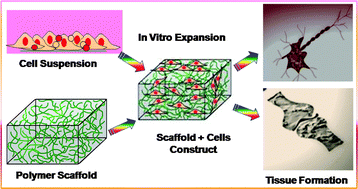
J. Mater. Chem. B, 2015,3, 8224-8249
https://doi.org/10.1039/C5TB01370D
Metallic nanoparticles as synthetic building blocks for cancer diagnostics: from materials design to molecular imaging applications
New perspectives on the efficiency of metallic nanoparticles as synthetic scaffolds for molecular imaging probe design and their use in medical diagnosis of degenerative diseases such as cancer.

J. Mater. Chem. B, 2015,3, 5657-5672
https://doi.org/10.1039/C5TB00841G
Peptide-directed assembly of functional supramolecular polymers for biomedical applications: electroactive molecular tongue-twisters (oligoalanine–oligoaniline–oligoalanine) for electrochemically enhanced drug delivery
We report the preparation and characterization of films of electroactive supramolecular polymers based on non-electroactive oligoalanines and electroactive oligoanilines.
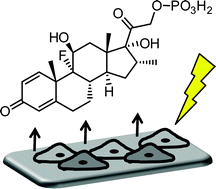
J. Mater. Chem. B, 2015,3, 5005-5009
https://doi.org/10.1039/C5TB00106D
Multiphoton microfabrication of conducting polymer-based biomaterials
Multiphoton microfabrication was used to prepare CP-based materials for drug delivery and stimulating tissues.
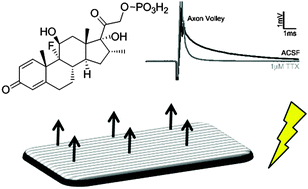
J. Mater. Chem. B, 2015,3, 5001-5004
https://doi.org/10.1039/C5TB00104H
Modified chitosan emulsifiers: small compositional changes produce vastly different high internal phase emulsion types
By varying the oligolysine units of chitosan-graft-oligoNIPAM-graft-oligolysine, high internal phase emulsions of different droplet sizes can be stabilized which can subsequently serve as template for macroporous polymers.
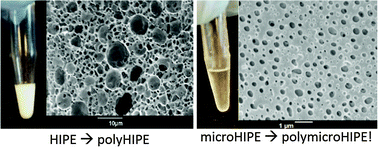
J. Mater. Chem. B, 2015,3, 4118-4122
https://doi.org/10.1039/C5TB00303B
Self-assembled micelles of amphiphilic PEGylated rapamycin for loading paclitaxel and resisting multidrug resistant cancer cells
A paclitaxel loaded PEGylated rapamycin micelle effectively bypasses the resistance mechanism, allowing for potent treatment of multidrug resistant cancer cells.
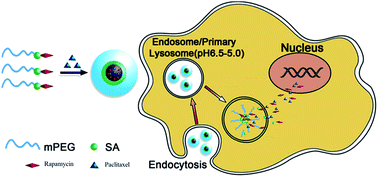
J. Mater. Chem. B, 2015,3, 1204-1207
https://doi.org/10.1039/C4TB01633E
Tetrabutylammonium methacrylate as a novel receptor for selective extraction of sulphonylurea drugs from biological fluids using molecular imprinting
Tetrabutylammonium methacrylate introduced as functional monomer for the stoichiometric imprinting of sulfonylurea drug glibenclamide.
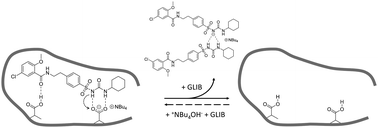
J. Mater. Chem. B, 2015,3, 8577-8583
https://doi.org/10.1039/C5TB01512J
Highly flexible silica/chitosan hybrid scaffolds with oriented pores for tissue regeneration
Inorganic/organic sol–gel hybrids have nanoscale co-networks of organic and inorganic components that give them the unique potential of tailored mechanical properties and controlled biodegradation in tissue engineering applications.
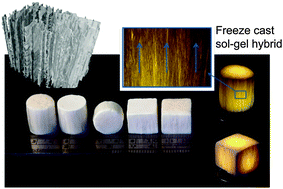
J. Mater. Chem. B, 2015,3, 7560-7576
https://doi.org/10.1039/C5TB00767D
Synthesis of mucoadhesive thiol-bearing microgels from 2-(acetylthio)ethylacrylate and 2-hydroxyethylmethacrylate: novel drug delivery systems for chemotherapeutic agents to the bladder
Thiol-bearing microgels have been synthesised from copolymerisation of 2-(acetylthio)ethylacrylate and 2-hydroxyethylmethacrylate, and subsequent deprotection using sodium thiomethoxide.

J. Mater. Chem. B, 2015,3, 6599-6604
https://doi.org/10.1039/C5TB00834D
Cationic poly(amidoamine) promotes cytosolic delivery of bovine RNase A in melanoma cells, while maintaining its cellular toxicity
Poly(amidoamine)s enhance cellular uptake of wild-type RNase A in B16F1 melanoma cells and help its cytosolic delivery, inducing increased cell death.

J. Mater. Chem. B, 2015,3, 6501-6508
https://doi.org/10.1039/C4TB02065K
Lethal photosensitisation of Staphylococcus aureus and Escherichia coli using crystal violet and zinc oxide-encapsulated polyurethane
Bactericidal polymer surfaces were prepared by crystal violet and ZnO nanoparticle encapsulation, demonstrating 99.9% dark kill of E. coli.

J. Mater. Chem. B, 2015,3, 6490-6500
https://doi.org/10.1039/C5TB00971E
Intracellular delivery of BSA by phosphonate@silica nanoparticles
Folate receptor mediated delivery of BSA to HeLa cells by a mesoporous phosphonate@silica nanoparticle carrier is described.
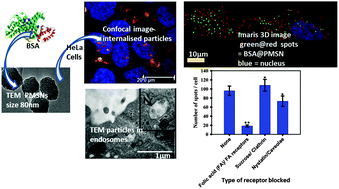
J. Mater. Chem. B, 2015,3, 6057-6070
https://doi.org/10.1039/C5TB00555H
Fabrication of calcium phosphate microcapsules using emulsion droplets stabilized with branched copolymers as templates
An efficient emulsion templating route using branched copolymers as droplet stabilizers for the synthesis of fluorescently labelled calcium phosphate capsules.

J. Mater. Chem. B, 2015,3, 5544-5552
https://doi.org/10.1039/C5TB00893J
Naturally inspired polyelectrolyte multilayer composite films synthesised through layer-by-layer assembly and chemically infiltrated with CaCO3
Inorganic chemical infiltration in polyelectrolyte multilayer films results in a considerable change in morphology and mechanical properties mimicking natural composite materials.

J. Mater. Chem. B, 2015,3, 4821-4830
https://doi.org/10.1039/C5TB00055F
Tailoring pH-responsive acrylic acid microgels with hydrophobic crosslinks for drug release
Amphiphilic microgels that were able to encapsulate and release both hydrophobic and hydrophilic moieties were fabricated via a new methodology using a lab-on-a-chip device.
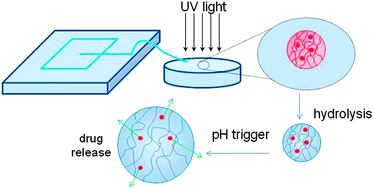
J. Mater. Chem. B, 2015,3, 4524-4529
https://doi.org/10.1039/C5TB00222B
The synthesis and characterisation of strontium and calcium folates with potential osteogenic activity
New strontium derivatives based on folic acid resulted in the formation of biocompatible SrFO compounds with osteogenic activity.

J. Mater. Chem. B, 2015,3, 2708-2713
https://doi.org/10.1039/C4TB01969E
Structure and function of the silicifying peptide R5
The first detailed description of the structure and function of the silicifying peptide R5.
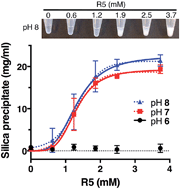
J. Mater. Chem. B, 2015,3, 2607-2614
https://doi.org/10.1039/C4TB01679C
Interactions of stealth conjugated polymer nanoparticles with human whole blood
Photoluminescent conjugated polymeric nanoparticles (CPNs) exhibit favourable properties as fluorescent probes due to their brightness, high photostability, tunable emission spectra and ease of surface modification.
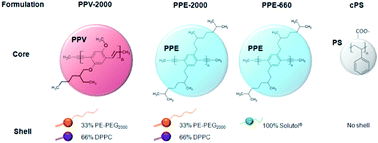
J. Mater. Chem. B, 2015,3, 2463-2471
https://doi.org/10.1039/C4TB01822B
Controlling colloidal stability of silica nanoparticles during bioconjugation reactions with proteins and improving their longer-term stability, handling and storage
Robust protocols for antibody-nanoparticle (Ab-NP) conjugation, and improved method for long-term stability and storage of Ab-NPs using cryoprotectants.
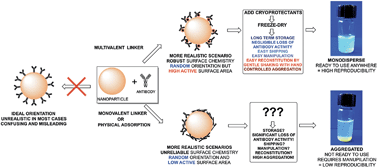
J. Mater. Chem. B, 2015,3, 2043-2055
https://doi.org/10.1039/C4TB01915F
Composite silica nanoparticle/polyelectrolyte microcapsules with reduced permeability and enhanced ultrasound sensitivity
This work reports novel silica/polyelectrolyte composite microcapsules, which exhibit superior ultrasonic sensitivity and reduced permeability. The composite capsules were facilely incorporated with silica nanoparticles and successfully applied to encapsulate Rh-B dyes with low molecular weight.
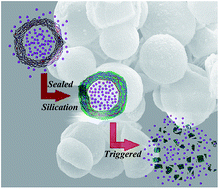
J. Mater. Chem. B, 2015,3, 1888-1897
https://doi.org/10.1039/C4TB01717J
About this collection
Introduced by Professor Marc in het Panhuis, who spent the early part of his research career in the UK
This web collection is dedicated to research from scientists based in the UK. I can still remember the excitement when I was awarded a post-doctoral position at the University of Manchester Institute of Science and Technology (UMIST), working with Professor Robert Munn and Professor Paul Popelier- I was on my way to the UK.
As a young scientist with a fresh PhD degree I was looking forward to going to a country that produced and trained many legendary scientists. In those days, when you said Manchester to me (bear in mind this was 1998 and well before the graphene Nobel Prize) I thought of scientists such as Ernest Rutherford (Nobel Prize in chemistry 1908), James Joule (a brewer with a serious devotion to science as a hobby) and music from the Happy Mondays, the Stone Roses, Simply Red and Oasis. I digress; let’s go back to the science.
A couple of years later, I moved to the University of Hull and it was there that my research started to shift towards biomaterials. One day I walked into the office of a colleague, Professor Vesselin Paunov, and said “hey man, I am looking for new stabilizers for suspending carbon nanotubes, got any suggestions?” He opened his drawer, and gave me a jar of gellan gum. This opened up my world to materials produced by microorganisms. It is these types of polymeric biomaterials and many others that are being increasingly used as new materials in bio-medical applications.
Materials for biology and medicine is an important field of research that is actively pursued all around the world. This issue contains examples of different forms of such materials including nanoparticles, living cells, biopolymers, peptides, hydrogels, and silica to name but a few. One particular thread running through this collection is an increased attention to the development of fabrication methods and materials with a direct translation to applications in drug delivery, tissue engineering and bio-medical devices. This is part of a worldwide shift in science towards translational research.
This web collection definitely showcases that the future shines bright for UK research, in particular in the area of materials for biology and medicine.
Best wishes, Marc
Professor Marc in het Panhuis
Associate Dean (International)
Faculty of Science, Medicine and Health
University of Wollongong, Australia
Associate Editor, Journal of Materials Chemistry B